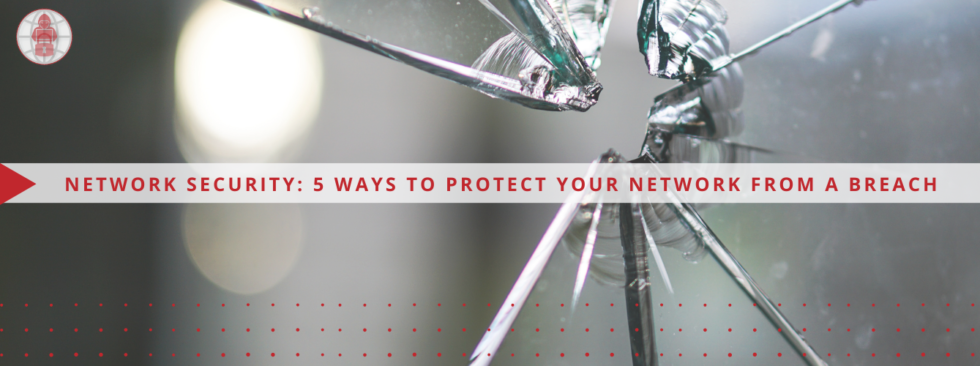Network Security: 5 Ways to Protect your Network From a Breach

Your business’s network is a lifeline. It’s how you get in touch with your customers, employees, partners and vendors. However, the network isn’t just a lifeline for the organization; it’s also an avenue for bad actors to exploit, making network security and protection a necessity in today’s modern world.
Having a secure network protects the sensitive data that flows through it, and also helps protect your business from cyberattacks and fraud. Malicious activity such as this could put your entire operation at risk. If you don’t know how to protect yourself against such threats, it can cost you dearly — not just in terms of money, but also in reputation.
In this post we’ll outline what you should know about cybersecurity, best practices to protect your organization’s network, and how you can minimize cyberattacks. Find out more about these topics with this blog post to better protect your organization’s data and networks.
1. Establish a coherent cybersecurity policy
Establishing a coherent cybersecurity policy is a crucial step in establishing a secure and resilient organization.
It is important to note that this policy will not be effective unless all employees are made aware of it and understand its principles. The following are some key points to include in your policy:
- The main goal of the organization’s cybersecurity program is to prevent unauthorized access to data by authorized users only.
- The organization will use multiple layers of security measures to protect its assets including physical, virtual, and organizational controls.
2. Implement security awareness training programs
Security awareness training programs can be customized to your company’s needs and goals, so we’ve put together some suggestions for how you can tailor yours to be effective.
First, it’s important that you decide what kind of security awareness program will work best for your company and its employees. This will depend on the size of your organization, what kinds of employees you have, and what kinds of threats they may face. For instance, if you’re a small business with only one employee who works in an office setting, then it might make sense to focus on building awareness around things like office safety procedures and securing electronic devices like laptops or phones. On the other hand, if you have dozens of employees across multiple locations or even if they’re remote workers then it might be more likely that they’d benefit from more general tips like how to stay safe online or how to identify phishing emails.
3. Conduct regular penetration tests on your network
When it comes to network security, it’s important to conduct periodic penetration tests on your network. These tests allow you to check for vulnerabilities and make sure that your network is secure.
In addition to being an effective way of keeping your network safe, penetration testing can also help you identify opportunities for improvement in your security measures.
You should always be looking for ways to improve the security of your network, but it can be difficult to know what needs attention when you’re not sure which areas are critical. A good way to start is by performing a penetration test every month or so, which will help you identify any vulnerabilities in your network quickly and easily.
4. Ensure that all systems are patched regularly
It is important that all systems are patched on a regular basis to avoid the risk of security breaches.
If you don’t keep your system patched, there’s a good chance that it will become vulnerable to attack. This means that hackers could take control of your computer or other devices, steal information from them, or even cause physical damage to them.
If you don’t keep your system updated regularly, then it may not work as well as it should when it comes time to update something like an operating system—which is often necessary in order to prevent an attack from happening at all.
5. Maintain strong passwords
Cybersecurity is a constantly evolving field, with new threats emerging every day. Maintaining a strong password for network devices is an important task that you should take seriously. It can help to prevent attackers from gaining access to your network, which could lead to costly damage or loss of critical information.
- Use different passwords for each account in your network. This makes it more difficult for attackers to gain access to one system and use it as a stepping stone into another account.
- Change your passwords regularly and do not reuse passwords across multiple accounts. If you do reuse passwords, make sure they are long and complex (at least 15 characters).
- Do not use the same password on multiple systems because this makes it easier for attackers to gain access to multiple accounts with one password.
There are many ways to protect yourself against this threat: use strong passwords, change your password regularly, and use two-factor authentication whenever possible.
Conclusion
“There’s no such thing as 100 percent security.” The only way to be truly secure from cybersecurity threats is not to connect with other networks. That’s obviously not an option. So the key is identifying the networking vulnerabilities in your business and doing what you can to improve your security. Contact us today to get know how you can protect your network
Comments
Post a Comment